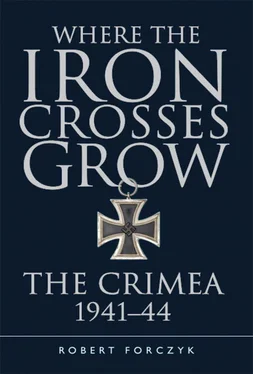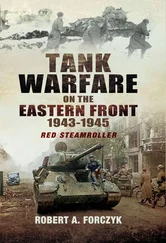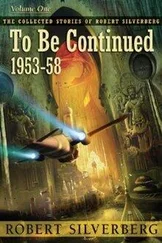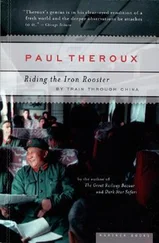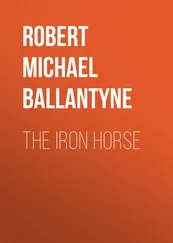It was Oktyabrsky’s persistent VVS-ChF air raids on Romania and the threat to Ploesti’s oil refinery that finally caused Hitler to take real interest in the Crimea. He was very nervous about any threats to his oil supplies from Ploesti, and recognized that the Crimea was a useful staging base for Soviet attacks on Romania, serving in the role of an “unsinkable aircraft carrier.” While Luftwaffe air raids on the VVS-ChF bases in the Crimea succeeded in destroying some aircraft on the ground, the only sure way to permanently stop the attacks on Romania was for German forces to occupy the Crimea sooner than expected.
On July 23, 1941 – ten days after the first VVS-ChF raid on Ploesti – a supplement to Führer Directive 33 was issued. It stated that once Heeresgruppe Süd occupied Kharkov, “the bulk of the infantry divisions will then occupy Ukraine, the Crimea, and the area of Central Russia up to the Don.” Less than three weeks later, a supplement to Führer Directive 34, issued on August 12, raised the priority of the Crimea further, stating that Heeresgruppe Süd was “to occupy the Crimean Peninsula, which is particularly dangerous as an enemy air base against the Romanian oilfields.” [6] Trevor-Roper, Hitler’s War Directives 1939–1945 , pp. 143, 149.
The VVS-ChF had gained Hitler’s attention. Once the Dnepr River was crossed, Rundstedt was obligated to send a strong force to occupy the Crimea. Hitler also began to openly talk of the great value that the Crimea would play in post-war German colonization plans in the East.
____________
While Oktyabrsky was using his bombers and submarines to try and harass the Romanian coast, the Soviet Southern Front was being defeated in detail by the Heeresgruppe Süd. On August 2, Panzergruppe 1 surrounded the bulk of the Soviet 6th and 12th Armies in the Uman Kessel and crushed the trapped Red Army units within a week. The battered Soviet 9th and 18th Armies, having escaped the Uman debacle, retreated toward the Dnepr River. On August 18, the 16. Panzer-Division captured the port of Nikolayev, which deprived the Black Sea Fleet of its main construction and repair facility. Meanwhile, the Romanian 4th Army had surrounded the port of Odessa, held by the Separate Coastal Army. Outnumbered 4-1 and isolated, the Coastal Army could hold Odessa only if the Black Sea Fleet ensured that supplies and reinforcements could be brought in by sea, as well as providing naval gunfire support as needed. Oktyabrsky had to commit a large portion of his surface forces and VVS-ChF aircraft into the fighting around Odessa. Although Oktyabrsky was able to hold back the battleship Parizhskaya Kommuna and his two modern heavy cruisers, he deployed three light cruisers and six to eight destroyers to support the Odessa garrison. For the most part, the Black Sea Fleet played an important part in keeping the siege of Odessa going for ten weeks, and it learned some valuable lessons about convoy operations, mine warfare, and amphibious landings in the process. However, the fighting at Odessa was a doomed effort from the start, and it served to drain resources from the Crimea, which would soon face its own test of fire.
Meanwhile, Generaloberst Eugen Ritter von Schobert’s 11. Armee (AOK 11) pursued the battered Soviet 9th Army to the Dnepr, but the Soviets managed to slip across the river, blow up the main bridges, and establish a hasty defense. Recognizing that German forces could cross the Dnepr at any time, Stavka Directive No. 00931, issued on August 14, activated the 51st Army in the Crimea and it was tasked to “hold the Crimean Peninsula in our hands to the last soldier.” Although Batov’s 9th Rifle Corps formed the core of the 51st Army, General-Colonel Fyodor I. Kuznetsov was brought down from Leningrad to take command of the new formation. In addition to Batov’s two regular rifle divisions, Kuznetsov was provided with two newly formed reserve rifle divisions from the Orel Military District, four militia divisions, and the 5th Tank Regiment. All told, Kuznetsov’s 51st Army had about 95,000 troops, but relatively little artillery or transport. Stavka Directive No. 00931 also made the Black Sea Fleet subordinate to Kuznetsov.
Kuznetsov was forced to begin throwing together a defense at the Perekop Isthmus in mid-August with most of his units still en route or severely understrength. Roughly 30,000 local civilians were used to assist the Red Army in fortifying the Perekop Isthmus and Chongar Peninsula, but Kuznetsov was ordered to “immediately clear” these areas of “anti-Soviet elements.” On August 16, NKVD detachments rounded up virtually all of the remaining Crimean Germans and deported them to the Urals, where most spent the next decade in labor camps operated by the NKVD. Roughly 20 percent of the Crimean Germans died in these camps. [7] Hilda Riss, Germans from Crimea in Labor Camps of Sverdlovsk District , Landsmannschaft der Deutschen aus Russland Heimatbuch, 2007/2008, pp. 58–91.
Kuznetsov’s deployment for battle was seriously hindered by faulty intelligence issued in General Staff Order No. 001033 on August 18, 1941:
According to information from the English military mission, the Germans are preparing sea [amphibious] operations against the Crimea in the most immediate future, while concentrating amphibious assault transports in Bulgarian And Romanian ports. The amphibious assault operation will be supported by airborne forces, which are concentrating in the Nikolayev region. [8] David M. Glantz, The Battle for the Crimea: Combat Documents and Chronology, Volume 1, 9 September – 31 December 1941 (Self-published by David M. Glantz, 2008), p. 17.
Despite the fact that the Axis had no appreciable amphibious capability in the Black Sea in August 1941 and their airborne forces were spent after their costly victory in Crete three months earlier, the Stavka was convinced that the threat was real. Accordingly, Kuznetsov deployed 40,000 of his men along the coast to defend against a non-existent amphibious threat and 25,000 in the interior of the Crimea to defend against airborne landings. Consequently, only 30,000 troops were left to defend the vital northern approaches into the Crimea, with just 7,000 troops from Colonel Aleksandr I. Danilin’s 156th Rifle Division at Perekop. Since there were no tanks assigned to the 51st Army, the Southern Front scraped together ten T-34 tanks and 56 T-37/38 tankettes from repair depots to form the 5th Tank Regiment under Major Semyon P. Baranov; the tanks were sent by rail to provide Kuznetsov with a small mobile reserve.
On August 30, the 11. Armee conducted an assault crossing of the Dnepr at Berislav and succeeded in building a pontoon bridge across the river. The 9th Army managed to impede the German build-up across the river for a week but Schobert conducted a breakout attack on September 9–10 that shattered the Soviet perimeter and forced the 9th Army to retreat eastward in disorder toward Melitopol. The approaches to the Crimea were now open. Schobert was faced with a dilemma, since he was tasked with both seizing the Crimea and supporting Panzergruppe 1’s advance toward Rostov. As soon as he had achieved a clean breakout from the Berislav bridgehead, he directed XXX Armeekorps and XXXXIX Gebirgs-Armeekorps to pursue the 9th Army to Melitopol, while sending General der Kavallerie Erik Hansen’s LIV Armeekorps toward Perekop. German intelligence about Soviet force in the Crimea was sketchy, based entirely upon aerial reconnaissance, and they were unaware of the creation of the 51st Army. Schobert ordered Hansen to send a fast advance guard to try and seize the Perekop Isthmus by coup de main , hoping that it was poorly guarded. In his moment of victory, however, Schobert was killed when his Fiesler Storch crashed on September 12. Hitler appointed General der Infanterie Erich von Manstein to replace Schobert, but he would not arrive for five days.
Читать дальше
